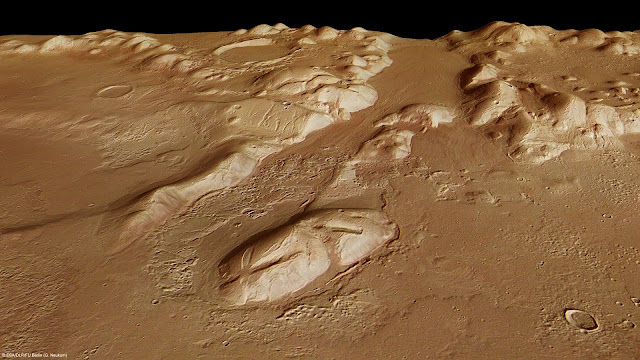ALBERT BIRKLE (1897-1966)
Le Lemberg (1,015m -3,330 ft)
Allemagne (Jura Spoiabe)
In Petersfelsen bei Beuron- Upper Danube Valley, 1922, huile sur carton, 70cm x 51cm
La montagne
Le Lemberg (1,015m -3,330 ft) est la plus haute montagne du Jura souabe. Elle se situe à l'est de Rottweil, dans le district de Tuttlingen près de la commune de Gosheim, dans le Bade-Wurtemberg en Allemagne. A son sommet se dresse une tour de 30 m de haut, culminant au-dessus des arbres environnants, et offrant par beau temps une perspective atteignant les Alpes.
Comme la plupart des montagnes du Jura souabe, le Lemberg est une " butte témoin ", c'est à dire un vestige d'un massif qui s'est érodé, faisant ressortir les sommets dans un matériau plus dur.
A partir du 8e siècle av. J.-C. au 5e siècle av. J.-C. (à l'époque de Hallstatt), la montagne abritait une colonie celtique. On trouve encore à son sommet les ruines des murs et des tombes d'une ancienne forteresse. À l'est et à l'ouest, le sommet a été aplati. Des traces d'activité celtique peuvent être trouvées dans les montagnes environnantes, comme dans toute la région de Heuberg.
Le nom Lemberg vient de la langue celtique, dans laquelle Lem signifie marécage ou tourbière. Son origine est probablement la rivière Bära, qui prend naissance au pied de la montagne. On pense qu'à l'époque préhistorique, son débit d'eau était plus important, rendant les environs marécageux.
Aujourd'hui, la tour Lemberg à son sommet est une tour en acier de 34 mètres de haut au sommet de la montagne, construite en 1899.
Le peintre
Albert Birkle est né à Charlottenburg, alors ville indépendante et depuis 1920 partie de Berlin. Son grand-père et son père, Carl Birkle, étaient tous deux peintres, originaires de Souabe. Albert Birkle a été formé comme peintre décorateur dans l'entreprise de son père. De 1918 à 1924, il étudie à la Hochschule für die bildenden Künste/College of Fine Arts, prédécesseur de l'actuelle Universität der Künste Berlin. Birkle a développé un style unique inspiré par l'expressionnisme et la Nouvelle Objectivité/Neue Sachlichkeit. Ses sujets étaient des paysages solitaires et mystiques, des scènes typiques du Berlin des années 20 et 30, telles que des scènes du parc Tiergarten, des scènes de bar, etc., des portraits de personnages et des scènes religieuses. Dans son style de portrait, il était souvent comparé à Otto Dix et George Grosz. En 1927, Birkle a eu son premier one man show à Berlin, qui s'est avéré être un grand succès. il décide de refuser un poste de professeur à l'Académie des Arts de Koenigsberg afin de continuer à travailler de manière indépendante en tant qu'artiste et de se consacrer à des missions dans le domaine de la décoration d'églises, dont il est devenu un spécialiste. Alors que le national-socialisme était en route vers le pouvoir, Birkle s'installa à Salzbourg, en Autriche, en 1932. Néanmoins, il représenta l'Allemagne à la Biennale de Venise jusqu'en 1936. En 1937, son œuvre fut déclarée "entartée", ses œuvres furent supprimées. de collections publiques, et une interdiction de peindre lui a été imposée. En 1946, Birkle a reçu la nationalité autrichienne. Dans l'année d'après-guerre, il gagne sa vie en peignant des fresques religieuses pour diverses églises et en faisant des peintures à l'huile. Au cours de sa dernière année, il est de plus en plus revenu à ses thèmes berlinois des années 20 et 30.
Les premiers travaux d'Albert Birkle étaient associés à Otto Dix et Grosz, ce qui ne semble pas vraiment juste à la lumière de sa propre originalité, car les thèmes sociaux et autres sont régulièrement teintés d'éléments fantaisistes, grotesques et lunatiques dans son wirk. Dans le cas de Birkle, la peinture typique de la Nouvelle Objectivité est plutôt une exception.
__________________________________________
2022 - Wandering Vertexes ....
Errant au-dessus des Sommets Silencieux...
Un blog de Francis Rousseau

%20-%20Acropolis%20-%20Parthenon_(1871)_MET%20new%20Yprk.jpg)
)%20-%20Petersfelsen%20bei%20Beuron-%20(Upper%20Danube%20Valley,%20Baden-Wu%CC%88rttemberg),922,%20oil%20on%20cardboard%20.png)
-%20Cirque%20de%20BArrosa-%20Pyre%CC%81nne%CC%81es.jpg)


%20-%20Glen%20Helen-%20watercolor.jpg)


-%20Wudangshan%20(X),%20lavis,%202018,%2028x38cm.png)
%20-San%20Miniato%20Hills%20(%20140m)%20,%201892,%20huile%20sur%20toile%2022x48,c%20cm-%20CP%20New%20York%20.png)